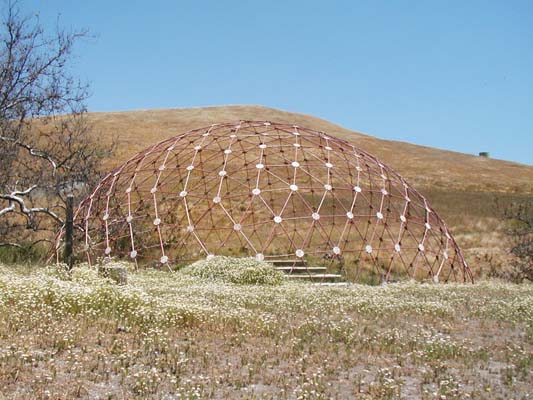 |
||
|
||
|
The Geodesic Dome:Specifically, this structure is a four-frequency octahedron alternate geodesic dome. It is fifty feet in diameter, which means that there is 1260 square feet on the ground floor. Aluminum tubing and old war surplus boiler pipe are the primary structure frame materials. It was originally engineered and put together by a team consisting of an architect, engineering, and math student. The instructions for the dome were left to the school by Buckminster Fuller himself, the engineer who discovered the ‘Bucky Ball’ and who was a frequent guest lecturer at Cal Poly. The dome is a shell-like structure that supports itself without supporting columns. The geodesic dome is the environmental covering and is independent of the inner living structure. The geodesic dome can be defined as an anticlinar structure of circular or broadly elliptical form designated by utilizing the shortest line between two points on any surface. It requires certain criteria including that there is ease of assembly, minimum building materials, and ability to withstand maximum snow and wind loads. The dome can resist winds up to 150 miles per hour due to its spherical shape. |
||



